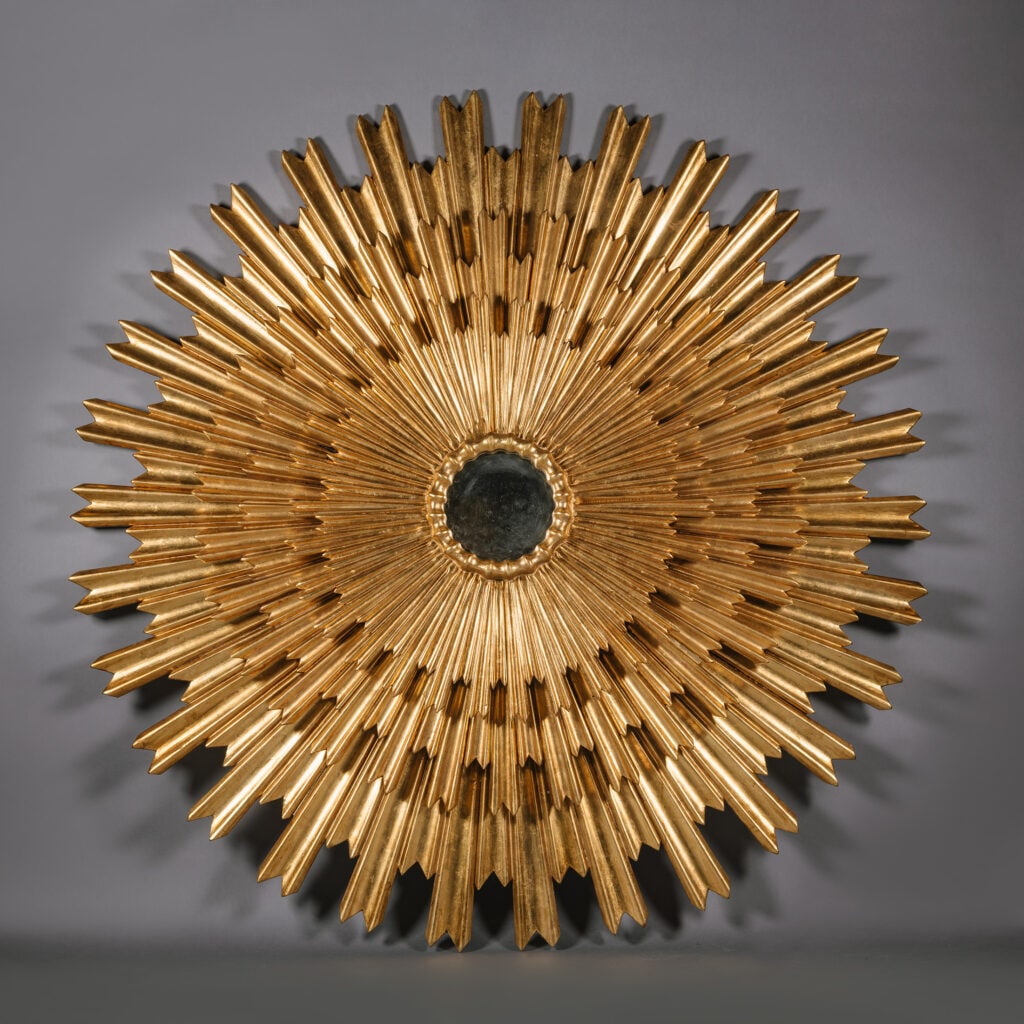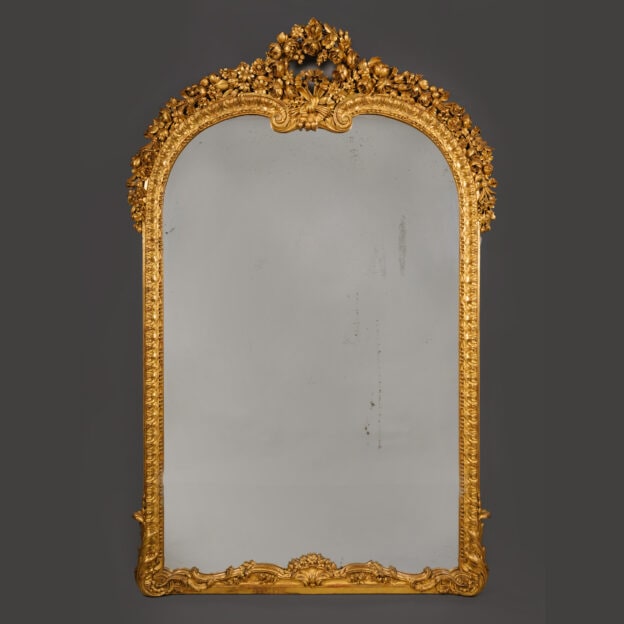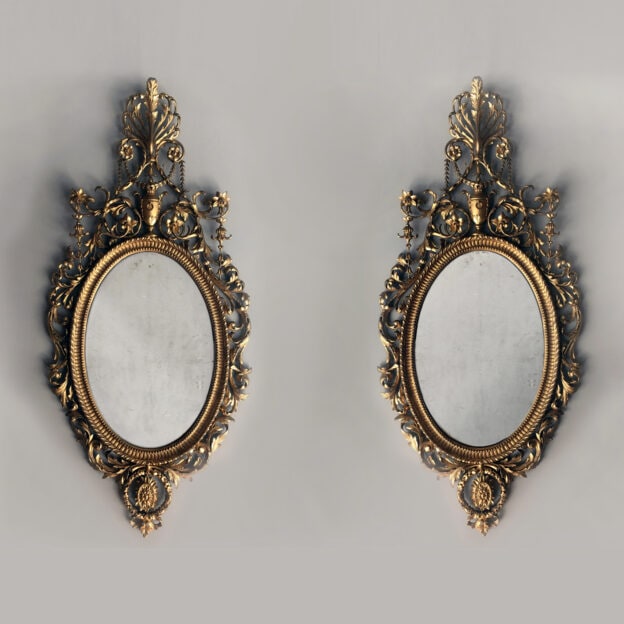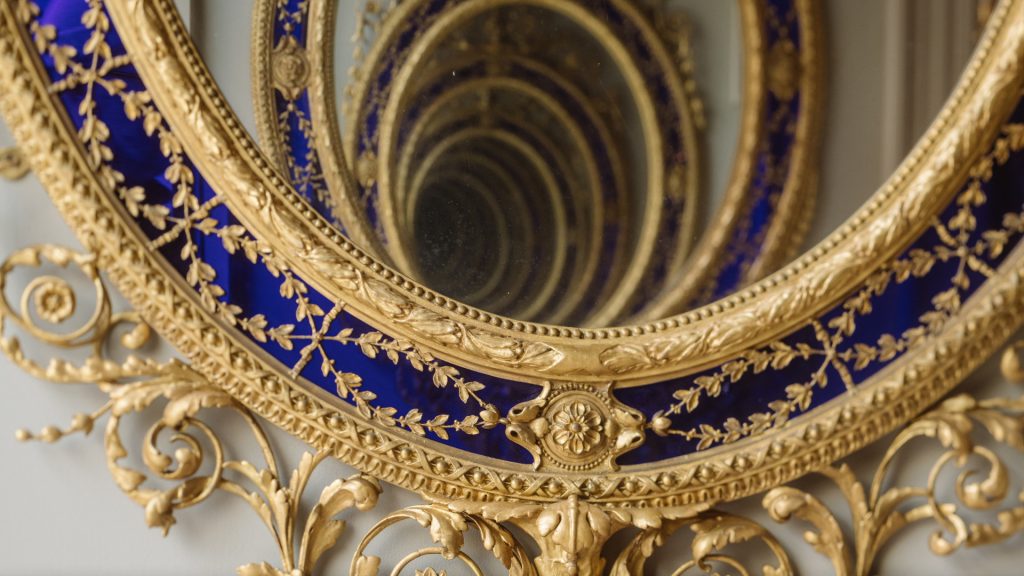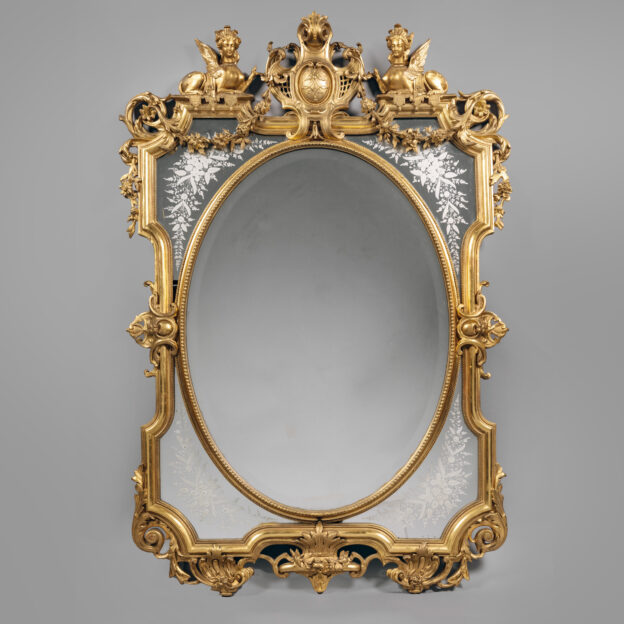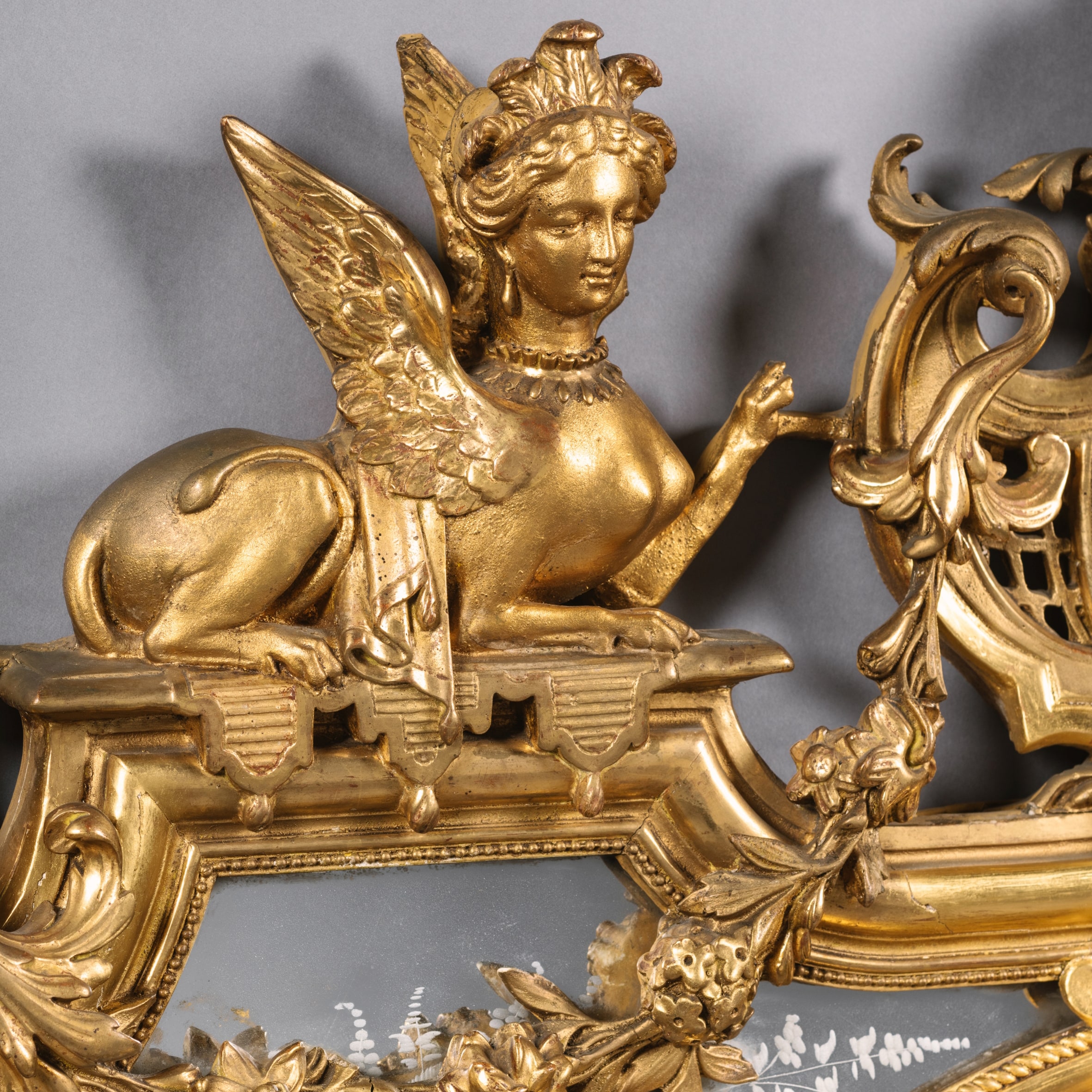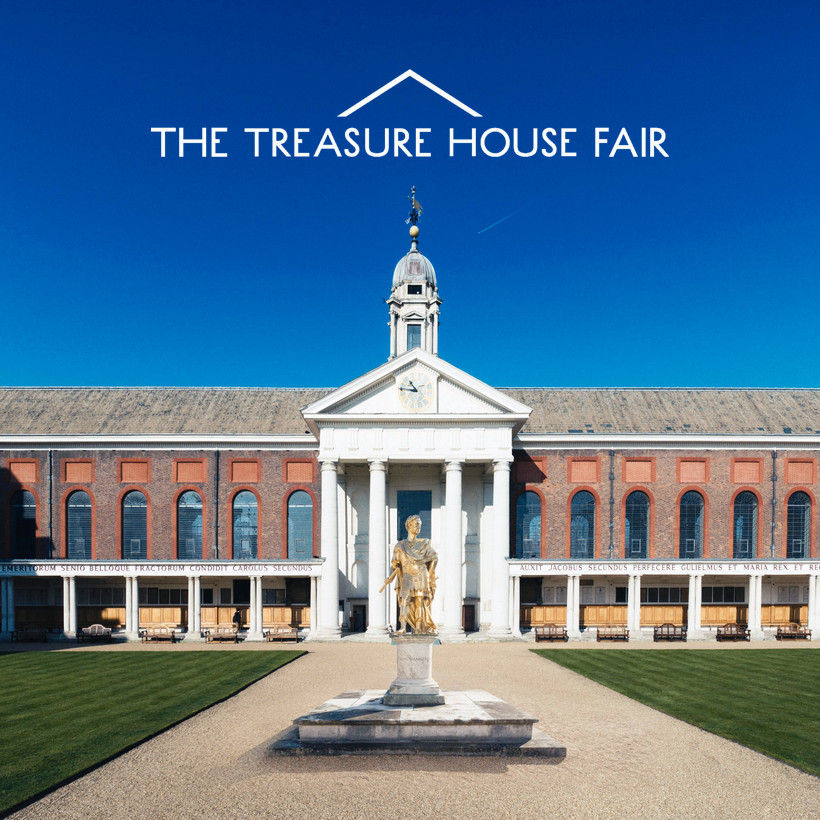A mirror does not take up room within an interior, but on the contrary provides the illusion of an enlarged space. Smaller rooms in particular feel instantly larger with the addition of a mirror.
Pier mirrors are often positioned between windows in order to maximise light reflections in the rooom creating a reversal of dynamic between night and day.
Do not assume that a small room will better accommodate a small mirror, the reverse is often true.
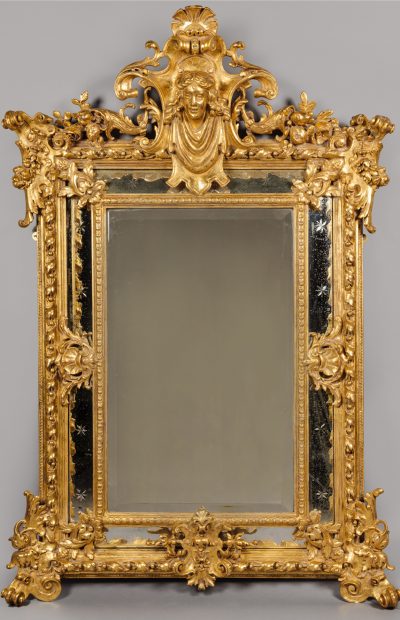
Antique mirror glass is very rarely flawless: silvering is commonly worn, and small losses may be present. Whilst it is possible to re-silver an original glass, small blemishes often lend greater character and charm to a mirror, as well as reflecting its history. It is also necessary to consider whether the mirror’s frame will be visually compatible with the rest of your interior. Check, too, for consistency in the frame’s patina as significant discoloration or variegated patches might indicate inadequate restoration.
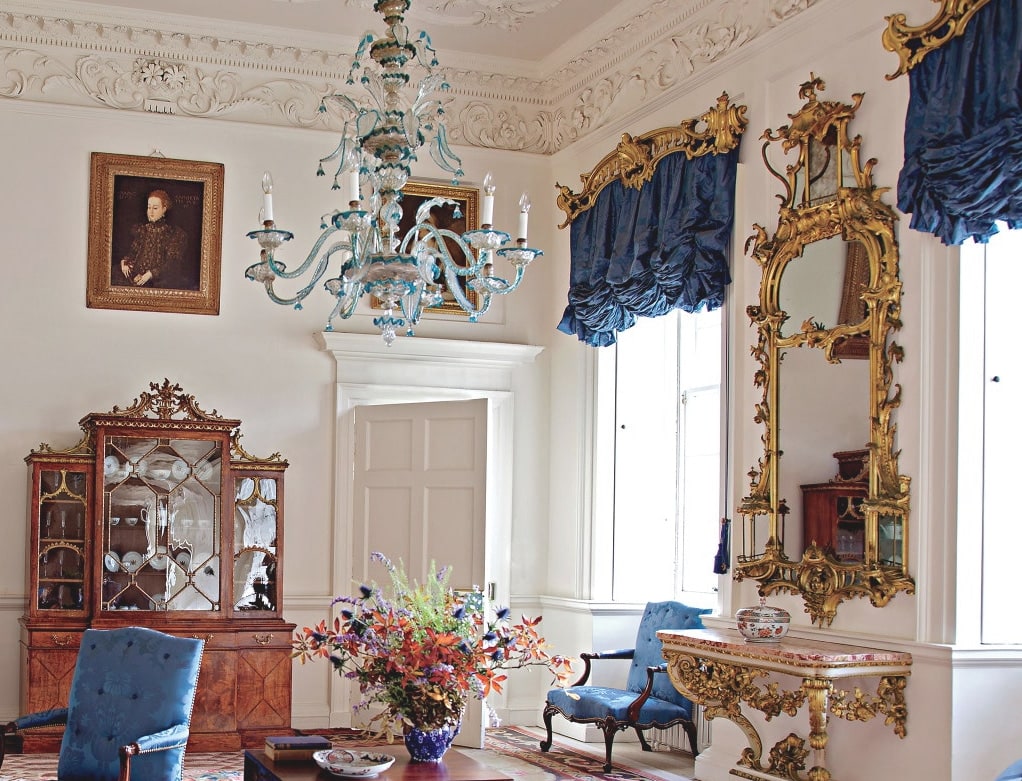
In period interiors, the mirror remains an important feature, completing the decorative scheme with a sophisticated and impressive focal point. Similarly, in modern interiors, the mirror can play a significant role in the form of a striking statement piece.
In today’s era of mass production, it is easy to overlook the historical value and importance of mirrors. Yet, if you possess a good eye for beauty, you will undoubtedly recognise and appreciate their allure.
